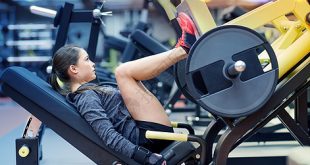Introduction:
When it comes to fitness exercises, there are two primary approaches: utilizing fitness equipment or engaging in free training. Both methods offer unique advantages and considerations, and choosing the right approach depends on individual preferences, goals, and circumstances. This article aims to explore the differences between fitness equipment and free training, providing an in-depth analysis of both options. By understanding the benefits and limitations of each method, individuals can make informed decisions and select the fitness approach that best suits their needs.
- Fitness Equipment: Advantages and Considerations:
Fitness equipment refers to a range of devices and machines designed specifically for exercise purposes. Incorporating fitness equipment into one’s workout routine offers several advantages. Firstly, it provides structure and guidance, particularly for beginners who may benefit from a clear set of exercises and routines. Additionally, fitness equipment often allows for more targeted and isolated muscle engagement, promoting specific strength gains or muscle development. The ability to adjust resistance levels and track progress is another benefit of fitness equipment, as it enables users to gradually increase intensity and challenge themselves over time.
However, there are some considerations to keep in mind when using fitness equipment. Cost can be a significant factor, as purchasing or accessing high-quality equipment may require a financial investment. Space requirements should also be taken into account, especially for home gyms or smaller living environments. Furthermore, reliance on fitness equipment may limit flexibility and variety in workouts, potentially leading to monotony or boredom for some individuals.
- Free Training: Advantages and Considerations:
Free training, on the other hand, refers to exercising without the use of specific fitness equipment or machines. This approach often relies on bodyweight exercises, functional movements, and the surrounding environment. Free training offers numerous advantages, including versatility and accessibility. It can be performed anywhere, anytime, making it ideal for those with limited resources or busy schedules. Free training also encourages full-body engagement, functional strength development, and improved stability and mobility.
Another benefit of free training is the opportunity for creativity and variety in workouts. Without being restricted to specific equipment, individuals can explore a wide range of exercises and movement patterns, adding novelty and excitement to their fitness routines. The cost-effectiveness of free training is another advantage, as it eliminates the need for expensive equipment or gym memberships.
However, free training does have considerations to be aware of. It may require additional knowledge and guidance to ensure proper form and technique, particularly for complex movements. Progress tracking can also be more challenging without the aid of specific equipment, although alternative methods such as timing, repetitions, or perceived exertion can be used. Individuals with specific strength or muscle development goals may find it more difficult to achieve targeted results solely through free training.
- Finding the Balance: Combining Fitness Equipment and Free Training:
Rather than viewing fitness equipment and free training as mutually exclusive options, many individuals find value in combining both approaches. By incorporating fitness equipment and free training into their workout routines, individuals can reap the benefits of both methods. This hybrid approach allows for structure, guidance, and targeted muscle engagement provided by fitness equipment while also embracing the versatility, accessibility, and functional movements of free training.
For example, one might incorporate strength training using weights or resistance machines to target specific muscle groups, while also incorporating bodyweight exercises like push-ups, squats, and lunges to enhance overall functional strength and stability. This balanced approach provides a well-rounded fitness routine that addresses both targeted muscle development and full-body engagement.
- Personal Preferences and Considerations:
Ultimately, the choice between fitness equipment and free training depends on personal preferences, goals, and individual circumstances. Some individuals thrive in a gym environment with access to a wide range of equipment, enjoying the structure and guidance provided by machines. Others prefer the freedom and flexibility of free training, embracing the challenge of using their own bodyweight and creative movements.
Considerations such as budget, available space, time constraints, and specific fitness goals should also inform the decision-making process. It is important to prioritize what works best for one’s lifestyle, ensuring that the chosen fitness approach is sustainable and enjoyable in the long run.
Conclusion:
The choice between fitness equipment and free training is a personal one, influenced by individual preferences, goals, and circumstances. Both methods offer distinct advantages and considerations. Fitness equipment provides structure, targeted muscle engagement, and progress tracking but may come with cost and space requirements. Free training offers versatility, accessibility, and functional movement patterns but requires additional knowledge and guidance.
Finding a balance between the two approaches can provide a comprehensive and fulfilling fitness routine. By incorporating fitness equipment for targeted strength gains and combining it with free training for full-body engagement and versatility, individuals can tailor their workouts to meet their specific needs and preferences. Ultimately, the most important factor is to choose the fitness method that suits you, supports your goals, and brings enjoyment and sustainability to your fitness journey.
 Live Health Guide–Home
Live Health Guide–Home




